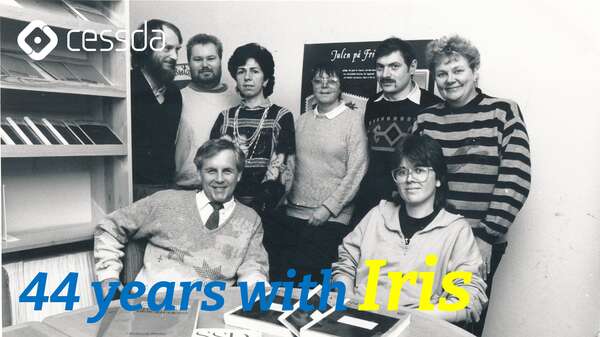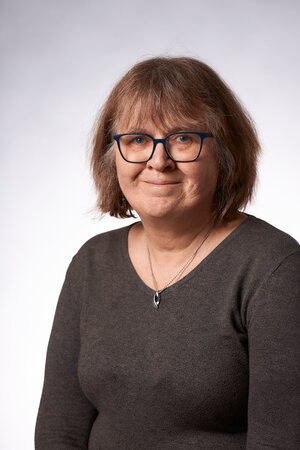
44 Years with Iris Alfredsson
It’s 1981. The first space shuttle, IBM computer, and MTV have just launched. Beyoncé was born, Roger Moore saved the world once again as James Bond, and Iris Alfredsson started working for the Swedish Social Science Data Service.
After 44 years with SSD/SND and CESSDA, Iris Alfredsson has clocked out for the last time. But before she fully steps into her new life of retirement, we sat down with her to hear what the journey has been like.
For as long as there has been a Swedish Service Provider, Iris Alfredsson has been a part of it. She has seen what we now know as the Swedish National Data Service grow from its careful start in a single office to a large organisation with over 30 employees.
“SND, or Svensk Samhällsvetenskaplig Datatjänst (Swedish Social Science Data Service), as it was known back then, started up in 1981. Back then, there were only two of us, so we had to do everything ourselves – from taking in new data, coding and correcting the data, to taking care of our own economy,” explains Iris.
Letters, catalogues, and magnetic tape
Receiving new data was no easy task back then. While researchers and data archives today have digital tools to help with the process, much of the work had to be done manually in 1981.
“In the beginning, only a few researchers understood the benefit of sharing their own data, and the data archives existed so people could use and actually read the data. Much of our job was to code and convert the data to the right format so that it could be shared. We didn’t have a lot of tools at our disposal – the internet was not a common thing back then. So we had to print catalogues with abstracts of the datasets we had, and then researchers could call us or send a letter to order the data they needed. We sent the data back on magnetic tape (plastic strips that store data using magnetism). It was no easy process, and you had to think carefully about what data you ordered. That’s why our codebooks for data and catalogues of abstracts were so important,” says Iris.
The evolution of CESSDA
While her job and those of her colleagues have changed drastically over the years, Iris still finds that much has stayed the same. One thing that hasn’t changed is the benefit of being a part of CESSDA.
“New things have come and gone, but CESSDA has always been important for working in social science data archives. It has made it easy for us to meet and learn from each other. When SSD was brand new, we didn’t know how to run a data archive for social science. But through CESSDA, we could learn from other data archives in Europe. It has become a sort of second family – we all know each other and help each other.”
One moment in CESSDA history stands out in particular to Iris: the first CESSDA Expert Seminar in 1987.
“It was very special. Before that, meetings had only been for the different Service Provider directors, but this was the first time the people who did the practical work could meet face to face and discuss cases, workflows, and share experiences. I got to meet many colleagues there whom I have worked a lot with since, like Vigdis (Kvalheim, Sikt) and Marion (Wittenberg, DANS).”
The Expert Seminars are still popular to this day, though the format has changed somewhat since the first edition some 38 years ago.
“It was the ’80s, so the room was full of cigarette smoke. And since we were in Denmark, you had free access to beer during the entire event,” laughs Iris.
During her 44 years in CESSDA, Iris has been a part of many projects and new inventions. But the creation of the first CESSDA data catalogue stands out among them as one she is particularly proud of having participated in – an important cooperative effort for everyone involved.
Time for a new chapter
As she now bids adieu to colleagues from near and far, Iris still has plenty to fill her days. With five grandchildren, two cats, a plot of land to grow her own vegetables, and an ever-growing backlog of books to read, she will, in her own words, “have plenty to keep her busy.”
And then there’s the history of SND – which she has been a part of since the beginning.
“My former colleague Birger, who retired two years ago, and I have a plan to write down the history of SND/SSD. We’ll see if it will be a book or blog posts for SND’s website. But it’s a history that’s worth writing down.”
A pillar in the community
As Iris announced her retirement, her inbox was flooded with congratulations, well-wishes, and bittersweet goodbyes from colleagues and friends. CESSDA Director Dr. Bonnie Wolff-Boenisch wished Iris all the best, emphasising that 40 years in CESSDA was a major achievement. Others brought up Iris’s good humour, ideas, team spirit, expertise, dedication, support, and advice over the years.
Good luck in your next chapter, Iris!